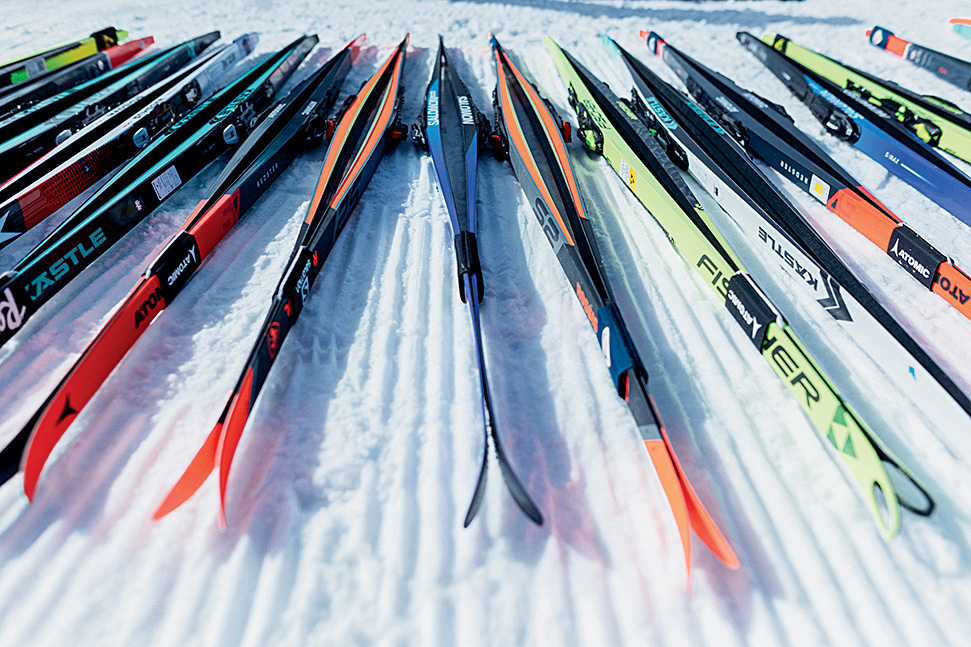Nordic skis come in several flavors: skate, classic and touring. Classic skis themselves have bases that are either waxable, waxless (with a cut or molded pattern) or partially covered by a mohair or synthetic skin. If you’re new to the sport, or buying your first cross country ski setup, where should you begin among all of those options?

The first thing to consider is where you plan on skiing most often. “We usually start by trying to get a feel for what people will be doing,” says Nathan Schultz, founder of Boulder Nordic Sport, which has stores in Boulder, Colorado, and Portland, Maine. For instance, someone looking to ski groomed trails at a Nordic center may be looking for a skate or waxless classic setup, while the person breaking light trail in the backcountry may want a wider skin-ski setup.
The next factor: how a ski fits in terms of length and flex. “Length is a consideration of height and weight,” Schultz says. “If you get too long of a ski, your tips will be clicking together and the ski will feel challenging to move. If the length is too short, it’ll be slower and you won’t be able to balance as easily on top of the ski.”
Flex—how much force it takes to push a ski down and bend it—varies from ski to ski and ranges from softer to stiffer. “Skiers who are newer to the sport usually seek out softer skis, but more athletic, advanced skiers seek out that stiffer flex because it gives a little more return and is more energetic,” Schultz adds.
The kind of conditions you’ll encounter most frequently in your area also help to determine the right flex. “For stability in hard conditions, a stiffer ski is going to be more stable,” says Mick Dodds, Nordic manager at Ski Hut in Duluth, Minnesota. “For softer snow, you want a softer ski, which will go over that snow instead of digging into it.”
Lastly, you do get what you pay for: The price of a ski will reflect its performance. More expensive skis are lighter, faster and more responsive. Less expensive skis tend to be a bit heavier and not as quick to respond, which may be just fine if you’re out there for recreation rather than to set race records. Quips Dodds, “the less expensive ski will be a lot of fun for a beginner skier—until they ski a more expensive ski and realize how much more fun it is.”
This story first appeared in the Autumn 2022 issue of Cross Country Skier (#42.1).